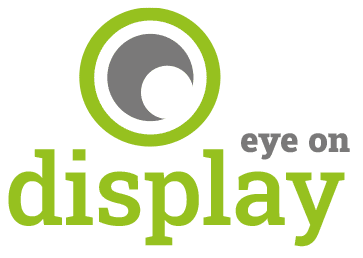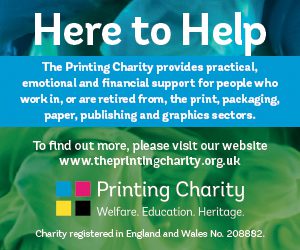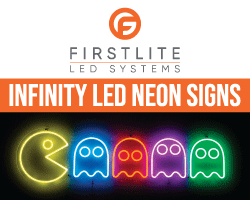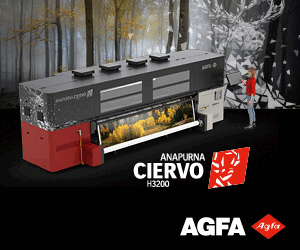Print media supplier, Ultraflex Europe, is marking a dual milestone. It’s been 30 years since they set up the business and 30 years supplying one of the UK’s leading branding and signage specialists, Macroart, based in St. Neots, Cambridgeshire.

The two anniversaries are closely linked as Utraflex Europe was initially set up within the original Macroart premises in 1993 to supply print media for their 5m wide format Vutek printer. Since this time, these two businesses have always been located close to each other and Ultraflex Europe continues to be a leading supplier of wide format media to Macroart and to the wider market.
Matt Guise Sales Director at Macroart, said:
“The proximity of Ultraflex has always been very handy and cost effective for the delivery of our 3m and 5m wide media, but today this has grown in significance as it dramatically assists our sustainability drive to reduce our carbon footprint.”
Macroart was started by John Walker in 1992 as a wide format print company. John, who had previously worked for Vutek in North America, had sold printing machines across Europe before setting up Macroart with the first 5m wide format machine in the UK. He approached Ultraflex in the USA with a view to supplying 5m wide media for his new machine, as there were no local suppliers at the time, and as a result Ultraflex Europe was born.

Ultraflex Europe houses stock just 100 metres from the Macroart facility resulting in speedy, low carbon, deliveries.
Mirroring the wide format market in the UK, Macroart has been on a continual growth path since this time, and they have retained their place as one of the largest wide format printers in the country. They now reside on one site, a 54,000 sq foot facility, that hosts two 5m UV machines and two 3m Dye Sublimation print engines, along with an array of finishing equipment. They also own a framing business on the same site, Aluvista, that produces bespoke aluminium POS structures and light boxes, as a lot of what Macroart produce is for live events (Air Shows, Conferences & Exhibitions) and retail.
Macroart went through an MBO in 2014 and the business has expanded and diversified over the years culminating today in an annual turnover of c: £14m. The business has become something of a specialist in Dye Sub Printing, which is traditionally a difficult process to get right, and they have spent lots of time testing materials to understand the shrinking and stretch factors to perfect the process. As a result, they now house their dye sub department in a climate-controlled area and have established an experienced stitching team within the finishing department to produce silicone edge graphics. They consider this a critical part of the process, as the finished product needs to be millimeter perfect to fit display systems with tight tolerances.
Whilst Ultraflex Europe is not the only media supplier to Macroart today, it’s impressive that they were not only the first to supply Macroart, but that 30 years on that supplier-customer relationship is as close as ever.
Matt Guise continues:
“We have always been impressed at the experience and knowledge of materials from the team at Ultraflex. Some of the media they supply is the same they supplied 30 years ago and we appreciate that consistency. It’s so important for us to be confident that the material will perform well and that it has been tried and tested by us. The key strengths of Ultraflex Europe for us are locality, expertise, consistency of materials and their honesty.”
“There is a lot of smoke and mirrors and greenwashing in the industry, and Ultraflex are consistently honest at answering the questions we pose. We purchase both UV and Dye Sub roll to roll media from Ultraflex. We still buy a lot of PVC products from them and as we are zero to landfill at Macroart and they are close by there is little C02 use to get the material to us. We print it and fit it and at the end of the event we de-rig, bail and palletise all our waste PVC for recycling. When you compare this to other ‘non-PVC’ or ‘sustainable’ materials, the carbon used in delivery can often outweigh the benefits.”
Macroart has embraced a sustainability drive and have a team of six internally that focus on it. They now employ a sustainability consultant, who is an industry expert, and have a green energy company on board too. Matt explains that their biggest wins in carbon neutrality are with the materials that they buy, so a strong relationship with their material suppliers is playing an increasingly important part in making an environmental difference.
Matt concludes:





















